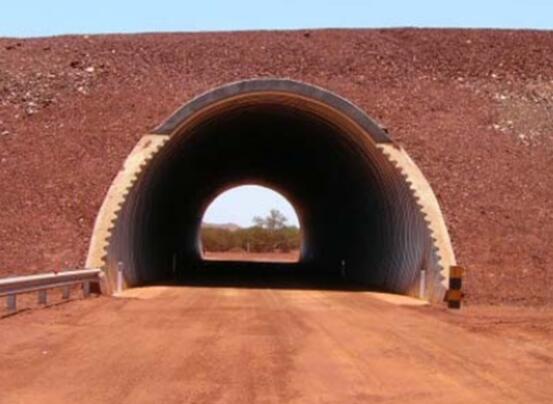Steel corrugated culverts are a type of culvert formed by connecting and assembling corrugated tubes or plates. For highway applications, uneven settlement of culverts is a primary cause of damage. These culverts are characterized by their lightweight construction, convenient and rapid installation, excellent durability, low engineering costs, substantial anti-deformation capability, and reduced maintenance expenses once operational.
Analyzing the essential relationship among materials, structures, and functions, the use of flexible, high-strength steel corrugated culverts not only adapts to foundation deformations but also mitigates culvert damage caused by uneven foundation settlement. Additionally, steel corrugated culverts exhibit excellent structural characteristics due to axial corrugations. The load-related stress and strain are distributed both axially and radially, which effectively dissipates stress concentrations, enhancing the inherent advantages of steel structures. This design offers significant economic benefits, especially in challenging environments such as cold, frozen soil, soft soil, expansive soil, and collapsible loess.
 Corrugated steel culvert pipe
Corrugated steel culvert pipe
This construction method is easy to operate, requiring no large equipment on site. The rapid assembly process effectively shortens the construction timeline.
The piece-by-piece assembly technique is not only beneficial for the loading, unloading, and transportation of steel corrugated culverts but also facilitates better supervision during on-site construction.
By eliminating concrete pouring and steel bar welding processes, this method minimizes noise pollution in surrounding areas. It also reduces the reliance on conventional building materials like cement, sand, gravel, and wood, which is significant for environmental sustainability.
The flexible docking clamp connection method for pipe sections avoids the drawbacks associated with traditional rigid flange connections. This approach significantly reduces the number of necessary connecting bolts, simplifying installation, disassembly, and adjustments to the pipe structure.
During backfilling, a "wedge area" compaction method is applied. Square wooden sticks are used for initial tamping, followed by diagonal tamping with small machines to ensure the quality of the compaction.
This construction method is intended for culverts or passages with diameters exceeding 2.0 meters but less than or equal to 6 meters, applicable across various highway grades. The construction principles are founded on the "thin shell" force theory of the steel corrugated culvert structure. Thanks to the axial corrugations, stress and strain are effectively distributed both axially and radially, which further attenuates load concentration. This design maximally leverages the advantages of corrugated culvert structures while accommodating foundation deformations.
Comments
Please Join Us to post.
0